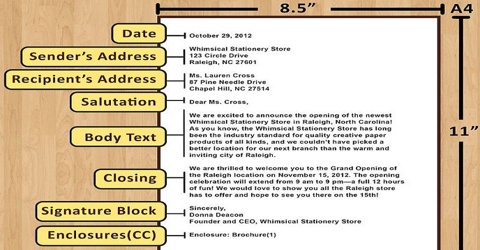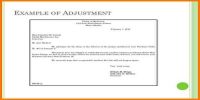The purposes of busies and personal letters are completely different. Business Letters are written to an individual, an authority, an office, an institution, or a company. They are written for business purposes. Personal Letters are written to friends, family, relatives, and acquaintances. They are written for the exchange of information, messages, and thoughts. So they differ from each other on various grounds. The prime grounds of their distinctions are mentioned below.
Differences between Business or Commercial Letter and Personal Letter
- Nature: The Commercial letter is impersonal and universal in one. It helps a great deal in maintaining professional relationships and developing contacts within your network. Generally, it contains business-related information.
- Purpose: This letter is written for exchanging various business-related information.
- Scope: Since it can contain various types of business information, its scope is vast and wide. These letters are normally kept short and to the point. One does not go for useless exaggeration in such letters as none has the time to kill in leisure in the business world.
- Use of Structure: The Business letter is written by strictly following officially recognized structure, rules, and procedures.
- Size: Generally, the size of the business letter is concise as it avoids irrelevant matters. They have single spacing, are left-justified with no paragraph indentation. They strictly have to be typed.
- Classification: Business letters can be categorized differently. A business letter has a lot of business-related issues and information to include.
- Salutation: Specific salutations such as Mr., Sir, Dear sir, Dear madam, etc. are used to open the description of the letter. The use of salutation depends on the formal relationship between the sender and the receiver.
- Language: No emotional or poetic language can be used in the business letter. The language is kept very formal in business letters. Salutations and closings are chosen very carefully to the most professional business sentiment. Its language should be straightforward, easy, simple, and courteous.
- The form of drafting: In most cases, the business letter is drafted in typewritten or composed form.
- Attachment of enclosure: If necessary, enclosures are attached to the business letter.
- Copy: Copy of business letter is generally preserved and if necessary also sent to others.
Personal letter
- Nature: Its orientation is personal. This letter is communication between friends on strictly non-official purposes. In this case, a handwritten personal letter is also legible. It contains personal or family-related information.
- Purpose: The purpose of this letter is to exchange personal or family-related information.
- Scope: It contains only personal information. So its scope is limited as compared to the business letter. These letters, length does not matter. All you need is to convey the right sentiment in the right way.
- Use of Structure: It does not follow any recognized structure, rule, or procedure.
- Size: The size of the personal letter may be concise or large. It requires following no set format. It is up to the writer to decide on what and how he wants to write the letter.
- Classification: Generally, it is not categorized. Personal letters are restricted only to personal or family affairs.
- Salutation: Here salutation depends on the personal relationship between the sender and the receiver. Generally, Respected, Dear friends, Dear, etc. are used as a salutation in the personal letter.
- Language: Here emotional, poetic, and sweet words are used to arrange messages. Personal letters require no such formalities. Because of their informal tone, senders often ignore the basic punctuation and capitalization standards.
- The form of drafting: It is generally drafted in handwritten form.
- Attachment of enclosure: No need to attach any enclosure here.
- Copy: Its copy is not normally preserved and no copy is sent to others.













